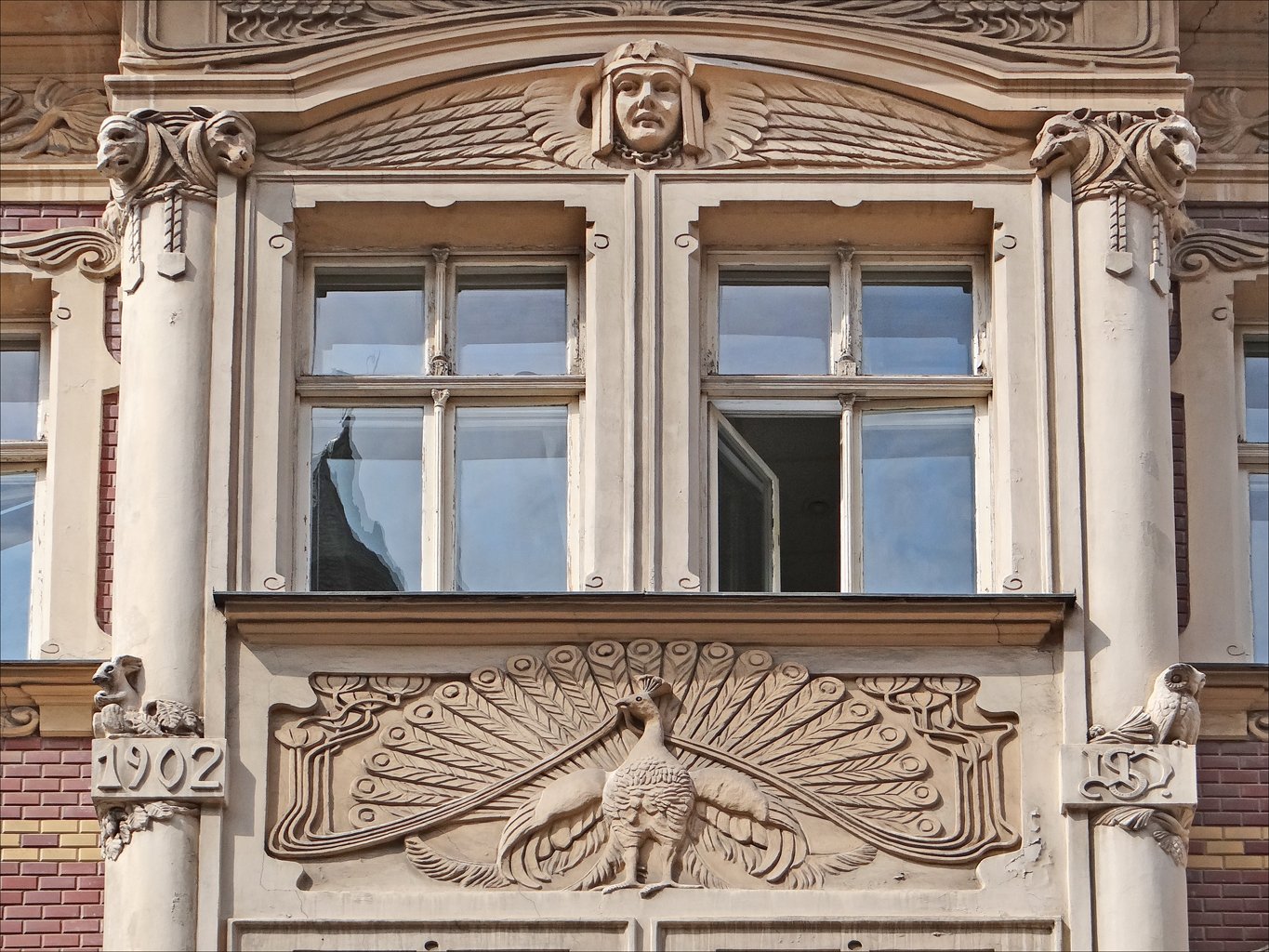#5656. 1902 Art Nouveau Facade with Peacock Ornamentation
The image showcases a magnificent example of Art Nouveau architecture from the beginning of the 20th century, as evidenced by the date "1902" carved on the left side of the facade. The building's facade is executed in the characteristic decorative style of this period, with an abundance of ornamental elements and flowing lines.
The central element of the composition is a pair of windows framed by elegant stucco work. Above the window openings is a decorative panel featuring a peacock with an unfurled tail — a characteristic Art Nouveau motif symbolizing beauty and sophistication. The stylized fan-shaped peacock tail creates a rhythmic ornamental pattern typical for the aesthetics of this period.
In the upper part of the facade, a sculptural depiction of a winged figure attracts attention, likely symbolizing the spirit of freedom or inspiration. On the sides of the facade are decorative elements in the form of stylized animals, possibly lions or griffins, which emphasizes the attention Art Nouveau architects paid to mythological and natural motifs.
The color scheme of the facade is built on the contrast between the light plaster of the main wall field and reddish brick inserts, which gives the composition additional expressiveness. This combination of materials is also characteristic of Art Nouveau architecture, where texture and naturalness were valued.
The windows have a traditional division into sections, indicating the preservation of some classical elements within the innovative style. Overall, this facade represents an excellent example of the synthesis of arts so characteristic of Art Nouveau, where architecture, sculpture, and decorative arts merge into a harmonious whole.
